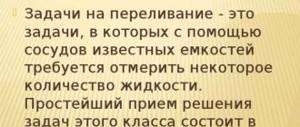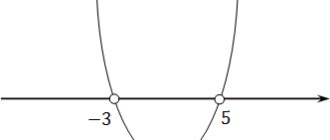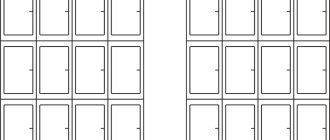1_Physics _Grade 10_Electrostatics_Coulomb's Law._lesson development
5.Explanation of new material.Drawing up a supporting outline.
6.
Problematic question
What determines the magnitude of the interaction force between charged bodies?
Draw an analogy with the law of universal gravitation
7.
Work in groups:
Group 1 . Explain Coulomb's experiment.
The basic law of electrostatics was established experimentally by the French scientist C. Coulomb in 1785. In Coulomb's experiments, the interaction forces of charged elderberry balls were measured.
To measure this force, Coulomb used a torsion balance (drawing in the textbook).
Coulomb determined the force of interaction between charged spheres based on the angle of rotation of the rocker arm.
Torsion scales
https://yandex.kz/video/search?filmId=10878650186337465163&text=%D0%B2%D0%B8%D0%B4%D0%B5%D0%BE%20%D0%B7%D0%B0%D0%BA %D0%BE%D0%BD%20%D0%BA%D1%83%D0%BB%D0%BE%D0%BD%D0%B0%20%D0%BE%D0%BF%D1%8B%D1 %82%20%D1%81%20%D0%BA%D1%80%D1%83%D1%82%D0%B8%D0%BB%D1%8C%D0%BD%D1%8B%D0%BC %D0%B8%20%D0%B2%D0%B5%D1%81%D0%B0%D0%BC%D0%B8&noreask=1&path=wizard
Group 2.
Explain Coulomb's law
Coulomb's law establishes a connection between the force of interaction of 2-point stationary charges located in a vacuum, the magnitude of their charges and the distance between them.
q1,q2
-
magnitude of charges
r
- distance between charges
k
- coefficient of proportionality
F
- force of Coulomb or electrostatic interaction.
Video on Coulomb's law
https://yandex.kz/video/search?text=%D0%B2%D0%B8%D0%B4%D0%B5%D0%BE%20%D0%B7%D0%B0%D0%BA%D0 %BE%D0%BD%20%D0%BA%D1%83%D0%BB%D0%BE%D0%BD%D0%B0%20%D0%BE%D0%BF%D1%8B%D1%82 %20%D1%81%20%D0%BA%D1%80%D1%83%D1%82%D0%B8%D0%BB%D1%8C%D0%BD%D1%8B%D0%BC%D0 %B8%20%D0%B2%D0%B5%D1%81%D0%B0%D0%BC%D0%B8&path=wizard&noreask=1&filmId=16717191564988909040
8.
Teacher’s explanation
The limits of applicability of the law:
1) Charged bodies must be pointlike.
2) Charged bodies must be stationary (in the case of moving charged bodies, the action of a magnetic field is manifested).
Factor k
in the formula is determined by the choice of system of units. It shows the force with which unit charges located at a unit distance from each other interact with each other.
In the SI system, the value of the coefficient k
equals
k
= 9 • 109
Nm2/Cl2.
Typically, the SI system uses a notation for the laws of electromagnetic phenomena, in which k
= 1 /4π
ɛ0 The constant
ɛ0
is called
the electrical constant
.
ɛ0
= 8.85 • 10-12 C 2/N m2.
Taking this into account, Coulomb's law can be written as follows:
A pendant (C)
is a charge passing through the cross-section of a conductor in 1 s at a current of 1A.
Cl = 1 A 1 s.
3. Dielectric constant of the medium
By placing point charges in various dielectrics, it was found that the force of interaction between them decreases, and the ratio of the force of interaction F0 of charges in a vacuum to the force of interaction of the same charges at the same distance in the medium does not depend either on the charges themselves or on the distance between them. It is determined only by the properties of the environment itself. Then
F0/ F = ɛ
The value ɛ
called
the dielectric constant of the medium.
Dielectric constant of the medium -
this is a physical quantity that characterizes the electrical properties of a substance and shows how many times the force of interaction of charges in a given medium is less than the force of their interaction in a vacuum. It is a dimensionless quantity.
4. Surface and volume charge density
[ ] - surface charge density
[ ] - volumetric charge density
9. Fixing the material.
Problem solving.
1. Two identical balls with charges 3e and – 7e were brought into contact and moved apart. What is the charge on the balls?
2. With what force do two point charges 10 nC and 15 nC interact, located at a distance of 5 cm from each other?
3. Two balls with charges q1 = 4 µC and q2 = -6 nC are located at a distance of 40 cm from each other in a vacuum.
With what force do these charges interact?
Solving problems on Coulomb's law grade 10 with solutions
Electric field. Electric field strength."
· Developmental: formation of independent activity skills, development of mathematical and physical horizons.
Figure 3 shows a drop located in a uniform electric field (between a positively charged plane (bottom) and a negatively charged plane (top)). The lamp is connected by copper wires to a current source with an emf of 2 V and an internal resistance of 0.04 Ohm.
The length of the wires is 4 m, their diameter is 0.8 mm.
The voltage at the source terminals is 1.98 V. Contents: It determines the magnitude and direction of the interaction force between two stationary point charges.
A point charge is understood as a charged body, the size of which is much smaller than the distance of its possible influence on other bodies. In this case, neither the shape nor the size of the charged bodies practically affects the interaction between them.
Solution: After contact, the charges on both balls became the same. According to the law of conservation of charge, the total charge of the balls will not change.
What charge must be given to each ball so that the force of mutual repulsion of charges balances the force of mutual attraction of the balls according to Newton's law of gravity? Consider balls as material points. Charles Augustin Coulomb (1736-1806) was a French scientist known for his experiments in electricity and magnetism and his study of friction forces.
His important achievement is the invention of a device for measuring forces - a torsion balance.
How many times must the distance between the charges be changed when one of them increases 4 times so that the interaction force remains the same?
The third charge Q1 can only move along a straight line passing through the charges. Determine the position of charge Q1 at which it will be in equilibrium.
In this case, the threads diverged at an angle α. The balls are immersed in oil with a density of 8*10^2 kg/m3. Determine the dielectric constant ε of the oil if the angle of divergence of the threads when the balls are immersed in the oil remains unchanged.
Two identical balls have charges of 8 nC and -4 nC.







